Egypt, often referred to as the “Gift of the Nile,” boasts a rich and majestic history that is interwoven with the reigns of powerful rulers known as pharaohs. For millennia, these leaders served as both political figures and divine symbols, shaping the course of Egyptian civilization through their remarkable lives and accomplishments. From the banks of the Nile to the sands of time, the legacy of the pharaohs endures as a testament to human ingenuity and ambition.
Menes (Narmer): The Unifier of Ancient Egypt
In the annals of ancient history, few figures loom as large as Menes, also known as Narmer, the legendary pharaoh who is credited with the unification of Upper and Lower Egypt. His reign, which commenced around 3100 BCE, marks a pivotal moment in the narrative of Egyptian civilization, shaping its trajectory for millennia to come. Through the lens of the Narmer Palette and the chronicles of early Egyptian dynasties, the story of Menes emerges as a testament to the enduring legacy of one of humanity’s earliest statesmen.
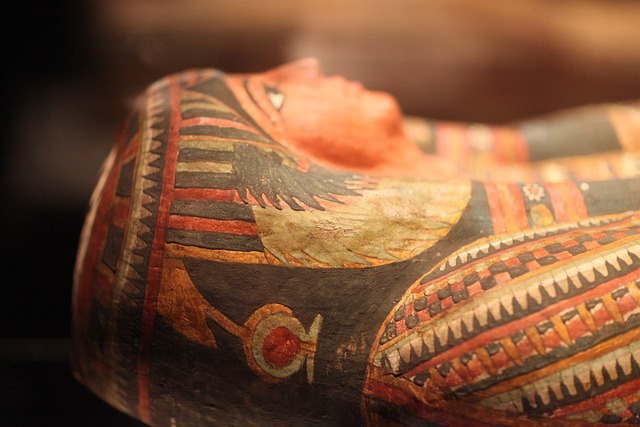
The historical records regarding Menes are often shrouded in myth and symbolism, reflecting the enigmatic nature of Egypt’s ancient past. According to tradition, Menes hailed from the city of Thinis in Upper Egypt, a region that would play a crucial role in his bid for supremacy over the Nile Delta. His rise to power unfolded against the backdrop of a fragmented Egypt, characterized by regional rivalries and competing centers of authority.
The defining moment of Menes’ reign came with his bold campaign to unite the disparate kingdoms of Upper and Lower Egypt under a single crown. The iconic Narmer Palette, a ceremonial slate adorned with intricate hieroglyphs and vivid imagery, serves as a testament to this historic achievement. Depicting scenes of conquest and royal authority, the palette portrays Menes as a divine ruler, wielding the symbols of sovereignty and dominion over the lands of the Nile.
Central to Menes’ vision of a unified Egypt was the establishment of a new capital city that would serve as the epicenter of his burgeoning empire. With strategic foresight, he selected Memphis, situated at the junction of Upper and Lower Egypt, as the seat of his royal court. Here, amid the fertile banks of the Nile, Menes laid the foundation for a dynasty that would endure for centuries, shaping the course of Egyptian history.
The legacy of Menes extends far beyond the realm of political consolidation and territorial expansion. His reign marked the dawn of dynastic rule in Egypt, ushering in an era of centralized governance and divine kingship that would define the nation’s identity for millennia. Through grand architectural projects and religious ceremonies, Menes sought to affirm his divine mandate to rule, invoking the power of the gods to legitimize his authority over the land and its people.
Yet, the story of Menes is not merely one of conquest and consolidation, but also of cultural synthesis and innovation. His reign witnessed the flourishing of art, architecture, and written language, as Egypt emerged as a beacon of civilization in the ancient world. From the construction of monumental temples to the refinement of hieroglyphic script, Menes’ patronage of the arts laid the groundwork for Egypt’s cultural renaissance, elevating it to the status of a global superpower.
As we reflect on the legacy of Menes, we are reminded of the enduring power of leadership and vision in shaping the course of human history. In his quest to unite a fractured land, Menes exemplified the virtues of courage, diplomacy, and statesmanship, leaving an indelible mark on the sands of time. His legacy lives on in the monuments and artifacts that bear his name, serving as a testament to the enduring spirit of ancient Egypt and the timeless quest for unity and greatness.
Hatshepsut: Egypt’s Trailblazing Female Pharaoh
In the annals of ancient Egyptian history, few figures shine as brightly as Hatshepsut, the remarkable female pharaoh who defied convention and left an indelible mark on the sands of time. Born into the illustrious 18th dynasty in the 15th century BCE, Hatshepsut’s reign stands as a testament to her visionary leadership, political acumen, and enduring legacy as one of Egypt’s most revered rulers.
Hatshepsut’s ascent to the throne represented a significant departure from traditional norms in ancient Egypt. In a male-dominated society where power was typically the domain of kings and pharaohs, Hatshepsut shattered barriers by assuming the full regalia of a pharaoh, including the ceremonial beard, kilt, and headdress. In doing so, she boldly proclaimed her right to rule and challenged prevailing notions of gender and authority.
Under Hatshepsut’s enlightened rule, Egypt experienced a period of unprecedented prosperity and cultural flourishing. As a patron of the arts and architecture, she oversaw the construction of grand monuments and temples that celebrated the splendor of the Egyptian civilization. Among her most enduring legacies is the iconic mortuary temple at Deir el-Bahari, a masterpiece of design and engineering that stands as a testament to her enduring legacy as a pioneering leader.
Situated against the dramatic backdrop of the Theban cliffs, the mortuary temple of Hatshepsut represents the zenith of Egyptian architectural achievement. Its terraced structure, adorned with colonnades, statues, and reliefs, served as both a funerary complex and a monument to Hatshepsut’s divine mandate to rule. Within its hallowed halls, scenes of royal propaganda and religious devotion were immortalized in stone, paying homage to the pharaoh’s reign and eternalizing her memory for generations to come.
Beyond her architectural endeavors, Hatshepsut’s reign was characterized by diplomatic prowess and strategic vision. Through shrewd alliances and international trade, she expanded Egypt’s influence across the known world, forging connections with neighboring kingdoms and fostering a climate of peace and prosperity. Her expeditions to the mysterious land of Punt, immortalized in the reliefs of her mortuary temple, underscored Egypt’s status as a global superpower and a beacon of civilization in the ancient world.
Yet, for all her achievements, Hatshepsut’s legacy is not without controversy. In the aftermath of her reign, subsequent rulers sought to erase her memory from the annals of history, defacing her monuments and usurping her rightful place in the royal lineage. It was not until modern times that the true extent of Hatshepsut’s contributions to Egyptian civilization was fully recognized and celebrated, cementing her status as one of antiquity’s most enigmatic and revered figures.
As we reflect on the life and reign of Hatshepsut, we are reminded of the transformative power of leadership and the enduring legacy of those who dare to defy convention. In a world defined by patriarchy and tradition, Hatshepsut blazed a trail of innovation and excellence, leaving behind a legacy that continues to inspire awe and admiration to this day. Through her vision and determination, she transcended the limitations of her time, proving that greatness knows no gender and that the spirit of leadership knows no bounds.
Ramses II: The Magnificent Pharaoh of Egypt
In the annals of ancient Egyptian history, few names evoke the grandeur and splendor of the New Kingdom period quite like Ramses II, known to history as Ramses the Great. Ascending to the throne in the 13th century BCE, Ramses II’s reign epitomized the zenith of Egyptian power and influence, marked by military conquests, monumental building projects, and enduring cultural legacies that continue to captivate the imagination of historians and scholars alike.
Born into the illustrious 19th dynasty, Ramses II inherited a kingdom poised for greatness. From the outset of his reign, he embarked on a campaign of military expansion and territorial conquest that would come to define his legacy as one of Egypt’s most celebrated rulers. Central to Ramses II’s military exploits was the famed Battle of Kadesh, a titanic clash against the Hittite Empire that showcased his tactical brilliance and martial prowess.
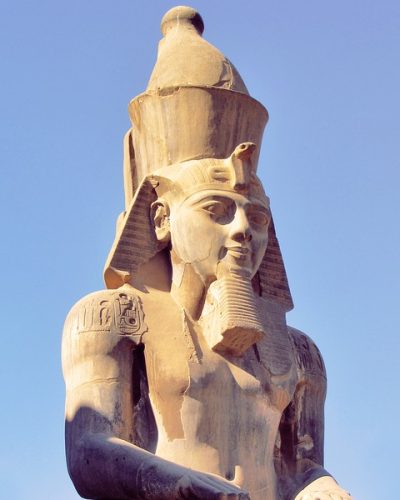
The Battle of Kadesh, fought around 1274 BCE, stands as one of the defining moments of Ramses II’s reign. Against overwhelming odds, he led his armies into the heart of enemy territory, defying expectations and securing a decisive victory that solidified Egypt’s dominance in the region. Although the outcome of the battle remains a subject of scholarly debate, Ramses II’s skillful manipulation of propaganda and commemorative inscriptions immortalized his triumph as a testament to Egyptian military might.
Yet, Ramses II’s legacy extends far beyond the battlefield. Throughout his reign, he embarked on a vast program of architectural and monumental construction that transformed the Egyptian landscape and cemented his status as a patron of the arts and culture. Among his most enduring achievements are the temples of Abu Simbel, colossal structures hewn from the living rock of Nubia’s cliffs, adorned with towering statues and intricate reliefs that celebrate the pharaoh’s divine mandate to rule.
The Ramesseum, Ramses II’s mortuary temple located on the west bank of the Nile at Thebes, stands as another testament to his enduring legacy as a builder and visionary. Its massive pylons, towering columns, and sprawling courtyards bear witness to the pharaoh’s insatiable ambition and desire to immortalize his reign for eternity. Within its hallowed halls, scenes of royal propaganda and religious devotion were meticulously carved into stone, ensuring Ramses II’s place among Egypt’s immortal gods and goddesses.
Yet, for all his grandeur and magnificence, Ramses II’s legacy is not without its complexities. Despite his military triumphs and architectural achievements, his reign was marked by periods of political instability and external threats, as rival powers vied for supremacy in the Near East. The peace treaty he negotiated with the Hittites, known as the Treaty of Kadesh, stands as a testament to his diplomatic skill and statesmanship, yet it also underscored Egypt’s vulnerability to foreign incursions and internal dissent.
As we reflect on the life and reign of Ramses II, we are reminded of the enduring power of leadership and the indelible mark of those who dare to dream big and defy the limitations of their time. In his pursuit of greatness, Ramses II left an indelible imprint on the sands of time, shaping the course of Egyptian civilization and inspiring generations to come. Through his military exploits, architectural marvels, and diplomatic endeavors, he embodied the timeless spirit of pharaonic Egypt, transcending the boundaries of mortal existence to achieve immortality in the annals of history.
Akhenaten: The Pharaoh of the Sun
In the annals of ancient Egyptian history, few figures stand as enigmatic and controversial as Akhenaten, the pharaoh who sought to revolutionize Egypt’s religious and cultural landscape during the 18th dynasty in the 14th century BCE. Known for his radical religious reforms and visionary outlook, Akhenaten’s reign represents a pivotal moment in Egypt’s history, marked by innovation, upheaval, and enduring legacy.
Born Amenhotep IV, Akhenaten ascended to the throne at a time of profound social and political change. Against the backdrop of Egypt’s traditional polytheistic pantheon, he embarked on a bold and audacious experiment to elevate the worship of the sun god, Aten, to the forefront of Egyptian religious life. Rejecting the traditional gods and goddesses of the Egyptian pantheon, Akhenaten proclaimed Aten as the sole deity worthy of worship, ushering in a monotheistic revolution that would reverberate throughout the land.
Central to Akhenaten’s religious reforms was the construction of a new capital city, known as Akhetaten, or Amarna, dedicated to the worship of Aten. Located on the banks of the Nile, Amarna served as a utopian vision of Akhenaten’s divine mandate to create a harmonious and enlightened society. Its grand avenues, sprawling temples, and opulent palaces reflected the pharaoh’s singular devotion to Aten and his desire to establish a new religious and cultural order.
Akhenaten’s reign also witnessed the emergence of a distinctive artistic style characterized by naturalistic depictions of the royal family and intimate portrayals of domestic life. Eschewing the rigid formalism of traditional Egyptian art, Akhenaten’s artists embraced a more fluid and expressive aesthetic, capturing the warmth and humanity of the pharaoh and his family in their everyday activities. These revolutionary artistic innovations provided insight into the personal and spiritual beliefs of Akhenaten’s court, offering a glimpse into the inner workings of his monotheistic vision.
Despite his lofty aspirations, Akhenaten’s religious reforms faced fierce opposition from the entrenched priesthood and conservative elements within Egyptian society. The abrupt transition from polytheism to monotheism disrupted age-old traditions and rituals, provoking resentment and resistance among the populace. Moreover, Akhenaten’s preoccupation with religious matters overshadowed pressing political and military challenges, weakening Egypt’s influence and stability on the international stage.
In the wake of Akhenaten’s reign, his successors sought to erase his memory from the annals of history, dismantling his monuments and effacing his inscriptions in a concerted effort to restore Egypt to its traditional religious practices. Yet, despite these efforts, Akhenaten’s legacy endured, capturing the imagination of scholars and historians for centuries to come.
As we reflect on the life and reign of Akhenaten, we are confronted with the complexities of leadership and the enduring quest for spiritual enlightenment. In his pursuit of a monotheistic utopia, Akhenaten challenged the very foundations of Egyptian society, leaving behind a legacy that continues to inspire fascination and debate to this day. Through his visionary zeal and unwavering conviction, he dared to dream of a world illuminated by the radiant glow of the sun, forever altering the course of Egyptian history and leaving an indelible mark on the sands of time.
Tutankhamun: The Boy King Who Unveiled Ancient Treasures
In the pantheon of ancient Egyptian rulers, few names evoke as much fascination and intrigue as Tutankhamun, the enigmatic pharaoh whose brief reign left an indelible mark on the annals of history. Ascending to the throne during the 18th dynasty in the 14th century BCE, Tutankhamun’s legacy is forever intertwined with the discovery of his remarkably preserved tomb in the Valley of the Kings, a momentous event that captivated the world and shed light on the mysteries of ancient Egypt.
Born Tutankhaten, meaning “the living image of Aten,” Tutankhamun came to power at a time of political and religious upheaval. He inherited the throne at a tender age, following the reign of his predecessor, Akhenaten, whose radical religious reforms had divided the kingdom and challenged the traditional polytheistic beliefs of Egyptian society. As pharaoh, Tutankhamun faced the daunting task of restoring stability and unity to a fractured land, while navigating the complex intricacies of court politics and religious orthodoxy.
Despite his youth and relative inexperience, Tutankhamun’s reign was marked by a renewed emphasis on traditional Egyptian religious practices and political stability. Under the guidance of his advisors, including the influential vizier Ay and the general Horemheb, Tutankhamun sought to reconcile the divisions of his predecessor’s reign and reaffirm Egypt’s devotion to the traditional gods and goddesses of the pantheon.
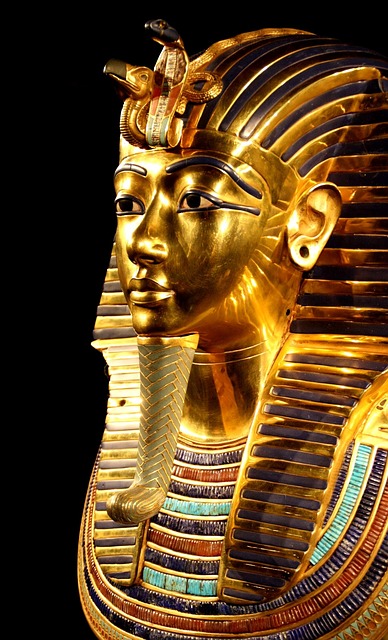
Yet, it was not Tutankhamun’s political accomplishments or military conquests that secured his place in history, but rather the astonishing discovery of his tomb in the Valley of the Kings nearly 3,000 years after his death. In November 1922, British archaeologist Howard Carter unearthed the entrance to the tomb, setting off a chain of events that would capture the world’s imagination and forever change our understanding of ancient Egypt.
What awaited within the depths of Tutankhamun’s tomb was nothing short of extraordinary. Untouched by grave robbers and preserved in pristine condition, the tomb contained a vast treasure trove of artifacts, including intricately carved furniture, golden statuary, ornate jewelry, and funerary objects of unparalleled beauty and craftsmanship. Among the most iconic discoveries was the golden funerary mask of Tutankhamun, a hauntingly beautiful depiction of the young pharaoh’s serene visage, adorned with precious metals and gemstones.
The treasures of Tutankhamun’s tomb provided invaluable insights into ancient Egyptian culture, religion, and funerary practices, offering a glimpse into the opulence and grandeur of pharaonic civilization. Through meticulous examination and analysis, archaeologists and scholars pieced together the story of Tutankhamun’s life and reign, unraveling the mysteries of his lineage, his royal court, and the circumstances of his untimely death at the age of just 19.
As we marvel at the splendor of Tutankhamun’s tomb and the treasures it contained, we are reminded of the enduring allure of ancient Egypt and the timeless quest for immortality that lies at the heart of human civilization. In death, Tutankhamun achieved a kind of immortality, his name and legacy echoing through the corridors of history and inspiring generations to come. Through the discovery of his tomb, Tutankhamun continues to reign as a symbol of Egypt’s golden age, a testament to the enduring power and majesty of the pharaohs who once ruled the banks of the Nile.
Cleopatra VII: The Last Pharaoh of Egypt
In the annals of history, few figures evoke as much intrigue and fascination as Cleopatra VII, the enigmatic queen who captivated the hearts and minds of the ancient world. As the last active ruler of the Ptolemaic Kingdom of Egypt, Cleopatra’s reign during the 1st century BCE marked a tumultuous period of political upheaval, romance, and tragedy that forever altered the course of Egyptian history.
Born in 69 BCE, Cleopatra ascended to the throne at a time of great uncertainty and instability in Egypt. The Ptolemaic dynasty, founded by Alexander the Great’s general Ptolemy I Soter, had ruled Egypt for nearly three centuries, but internal strife and external threats threatened to unravel the kingdom’s fragile unity. Against this backdrop of uncertainty, Cleopatra emerged as a shrewd and resourceful leader, possessing a keen intellect and an unwavering determination to safeguard Egypt’s independence and prosperity.
Central to Cleopatra’s reign was her mastery of diplomacy and statecraft, skills she deployed with remarkable effectiveness in her dealings with Rome, the preeminent power of the Mediterranean world. Recognizing the strategic importance of maintaining strong ties with Rome, Cleopatra forged alliances with some of the Republic’s most powerful leaders, including Julius Caesar and Mark Antony, in a bid to secure Egypt’s autonomy and protect her throne from rival claimants.

Cleopatra’s relationship with Julius Caesar, one of history’s most famous political alliances, proved pivotal in safeguarding Egypt’s interests against the machinations of her enemies. Following Caesar’s assassination in 44 BCE, Cleopatra aligned herself with Mark Antony, forming a romantic and political partnership that would alter the course of history. Together, Cleopatra and Antony sought to challenge the growing power of Octavian, Caesar’s adopted heir, and preserve Egypt’s sovereignty in the face of Roman expansionism.
Yet, it was Cleopatra’s tragic romance with Mark Antony that would ultimately seal her fate and bring about the downfall of the Ptolemaic dynasty. Defeated by Octavian at the Battle of Actium in 31 BCE, Cleopatra and Antony retreated to Egypt, where they faced a final, desperate stand against the forces of Rome. In a dramatic denouement that has captured the imagination of artists and poets for centuries, Cleopatra and Antony chose to die rather than submit to Roman conquest, their love immortalized in myth and legend.
With Cleopatra’s death, the curtain fell on the Ptolemaic era, and Egypt was absorbed into the burgeoning Roman Empire. Yet, despite her defeat and the end of her dynasty, Cleopatra’s legacy endures as a symbol of resilience, intelligence, and female empowerment. A skilled linguist, scholar, and diplomat, Cleopatra defied the conventions of her time, wielding power and influence in a male-dominated world with grace and determination.
Through her patronage of the arts, sciences, and culture, Cleopatra left an indelible mark on Egyptian civilization, fostering a renaissance of intellectual and artistic achievement that would endure long after her passing. Her tragic end only served to burnish her legend, transforming Cleopatra into a timeless icon of romance, ambition, and defiance against the forces of destiny.
As we reflect on the life and legacy of Cleopatra VII, we are reminded of the enduring power of leadership and the indomitable spirit of those who dare to challenge the status quo. In her brief yet eventful reign, Cleopatra defied the odds, leaving an indelible imprint on the sands of time and securing her place among history’s most compelling and enigmatic figures.
The lives and accomplishments of these notable pharaohs serve as a testament to Egypt’s enduring legacy as a cradle of civilization. From the grandeur of the pyramids to the intricacies of hieroglyphic writing, the contributions of the pharaohs continue to inspire awe and fascination across the globe. As custodians of an ancient and storied past, the pharaohs of Egypt stand as symbols of power, innovation, and the enduring quest for immortality in the annals of human history.

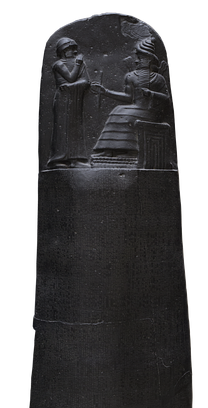
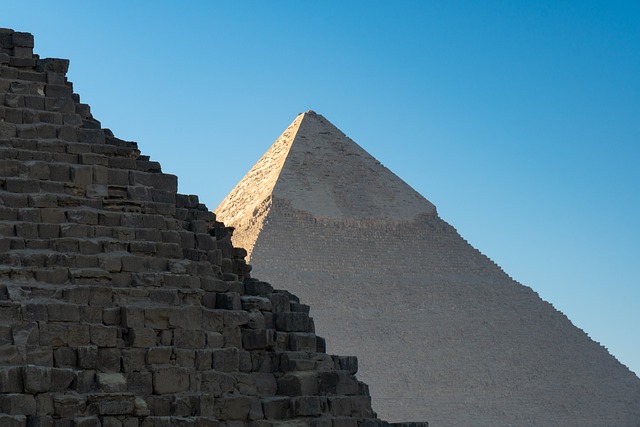
Pingback: Unveiling the Secrets of Daily Life in Ancient Egypt